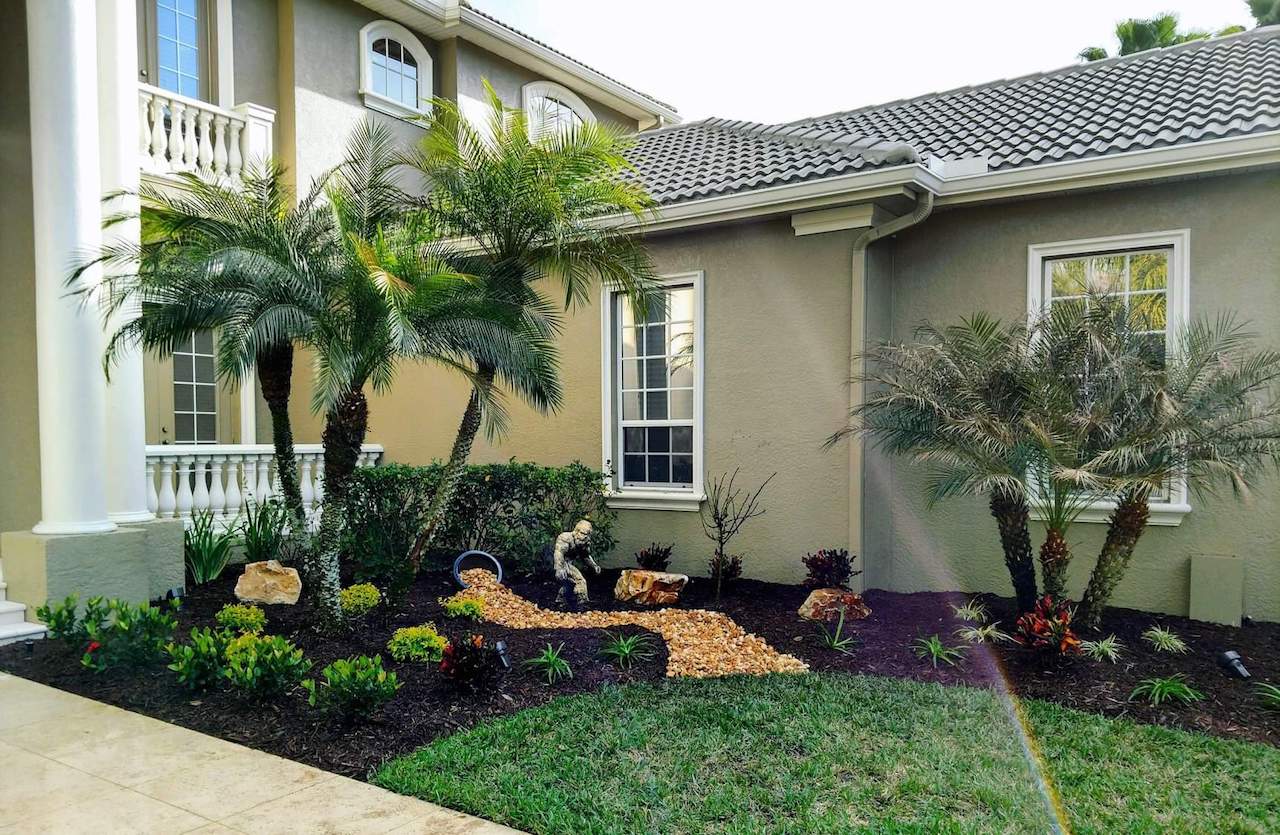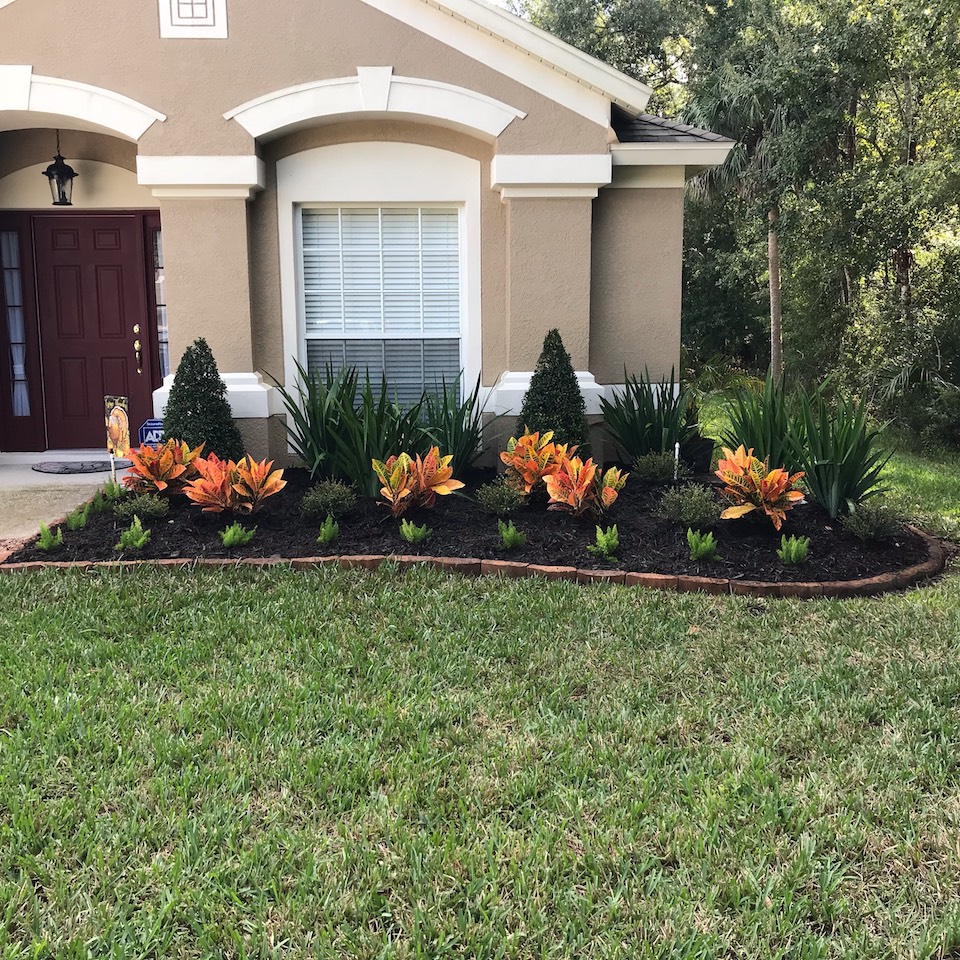Change Your Outdoor Room with Specialist Palm Desert Landscaping Providers
Change Your Outdoor Room with Specialist Palm Desert Landscaping Providers
Blog Article
A Comprehensive Overview to Designing and Implementing Effective Landscaping Solutions
The art and science of landscape design prolong beyond plain looks; they entail a thoughtful assimilation of style principles, ecological stewardship, and functional execution. An extensive guide to reliable landscaping services begins with a thorough understanding of your outdoor area, emphasizing the importance of unity, balance, and percentage. As we discover sustainable strategies and the choice of appropriate vegetation, the effects for biodiversity and community health become increasingly apparent. What methods can one use to make sure these landscapes not only prosper yet additionally prosper attuned to their surroundings?

Recognizing Landscape Design Concepts
One could question what fundamental elements add to efficient landscape style. At its core, effective landscape layout depends upon numerous key principles that direct the setup and choice of components within a room. These principles consist of unity, rhythm, percentage, and balance, each offering to produce an unified exterior setting.
Unity describes the cohesive relationship amongst different components, ensuring that they collaborate visually and functionally. Balance can be attained with in proportion or unbalanced plans, enabling the landscape to really feel steady and inviting. Percentage involves recognizing the range of elements in regard to each various other and the surrounding environment, promoting visual harmony and comfort.

Evaluating Your Outdoor Room
Before carrying out the concepts of landscape design, a comprehensive analysis of your outside area is crucial. This first evaluation aids define the range of your landscaping job and makes sure that your style aligns with the one-of-a-kind qualities of your residential property. Begin by assessing the dimensions of your space, taking precise dimensions to comprehend the available area for numerous aspects such as patios, paths, and yards.
Next, observe the existing functions of your landscape, including topography, soil quality, and drainage patterns. These factors considerably influence plant selection and positioning. In addition, assess the sunshine direct exposure across different areas throughout the day, as this will certainly impact the types of plants that grow in your garden.
Consider the microclimates created by frameworks, trees, and other challenges, as they can influence temperature and dampness degrees. Last but not least, keep in mind of any kind of existing plants or hardscape aspects that you want to get rid of or preserve. This thorough examination prepares for a effective and well-informed landscaping solution, making certain that your design is not just aesthetically pleasing however lasting and likewise useful for several years to come.
Lasting Landscape Design Techniques
Integrating sustainable landscaping strategies is essential for producing an environmentally accountable outdoor area. These methods not just advertise environmental balance yet likewise enhance the useful and aesthetic worth of a landscape. One foundational technique is the utilization of indigenous plants, which need much less water and maintenance while supporting local wild animals. Carrying out effective watering systems, such as drip irrigation, lessens water waste and guarantees that plants get adequate wetness.

One more effective technique is the calculated placement of hedges and trees to provide natural windbreaks and color, thus lowering energy costs (Palm Desert Landscaping). Rainfall yards can be incorporated into the landscape layout to take care of stormwater overflow effectively, filtering toxins before they go into rivers
Choosing the Right Plant Kingdoms
Choosing the right plants for your landscape is important to achieving both visual allure and ecological consistency. The procedure starts with an understanding of your local environment, dirt conditions, and the certain microenvironments within your landscape. Assessing variables such as sunshine direct exposure, wetness degrees, and existing plants will certainly help you choose plants that prosper in your unique setting.
Think about including indigenous plants, as they are well-adapted to local problems, call for less maintenance, and assistance regional wildlife. In addition, selecting a diverse selection of types can boost biodiversity while reducing the danger of condition and pest break outs. It is important to assess the growth habits, blooming periods, and seasonal shades of potential plants to create a natural and vibrant landscape.
Moreover, think of the planned use the area; for example, if the area will experience high foot web traffic, decide for resilient ground covers. By thoughtfully selecting plants that line up with both your aesthetic goals and ecological demands, you can create a sustainable landscape that not just improves your home yet likewise adds favorably to the surrounding ecosystem.

Application and Maintenance Approaches
As soon as the ideal plants have been selected for your landscape, the focus moves to effective implementation and recurring upkeep techniques. Effective installation begins with correct website preparation, which includes soil testing to determine nutrient levels and pH, complied with by modifying the dirt as required. Very carefully arrange plants according to their development practices and light demands, guaranteeing appropriate spacing to promote healthy development.
Watering is a crucial component of execution. Develop a watering routine that takes into consideration the particular requirements of each plant species, changing for seasonal adjustments. Making use of drip irrigation systems can enhance water effectiveness and reduce overflow.
Upkeep methods need to be implemented to make sure the durability and vitality of your landscape. Regular jobs include weeding, mulching, and pruning to regulate growth and prevent disease. Fertilization needs to be carried out based upon soil tests, giving the required nutrients without over-fertilizing.
Monitoring for parasites and diseases is essential; early discovery can avoid significant damages. Finally, seasonal adjustments to maintenance regimens, such as winterizing perennials and preparing for springtime development, will ensure that your landscape remains healthy and balanced and visually appealing year-round.
Final Thought
Effective implementation and ongoing upkeep even more make sure the longevity and vitality of landscapes. By incorporating these components, landscapes can be changed right here right into beautiful, functional atmospheres that his comment is here advertise biodiversity and contribute positively to neighborhood well-being.
One could question what foundational elements contribute to efficient landscape layout. At its core, effective landscape style pivots on numerous essential concepts that lead the plan and choice of components within an area.Choosing the right plants for your landscape is crucial to achieving both visual allure and environmental consistency. It is important to review the development habits, flowering periods, and seasonal colors of prospective plants to create a dynamic and cohesive landscape.
Once the appropriate plants have actually been chosen for your landscape, the focus moves to efficient execution and recurring maintenance approaches.
Report this page